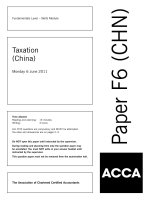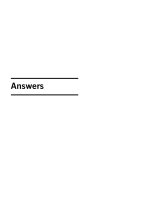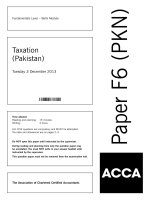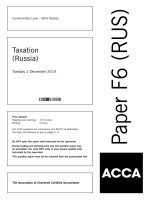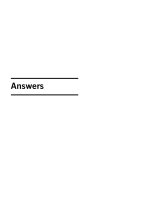ACCA f6 taxation romania 2013 dec question
Bạn đang xem bản rút gọn của tài liệu. Xem và tải ngay bản đầy đủ của tài liệu tại đây (251.35 KB, 11 trang )
Taxation
(Romania)
Tuesday 3 December 2013
Time allowed
Reading and planning:
Writing:
15 minutes
3 hours
ALL FIVE questions are compulsory and MUST be attempted.
Tax rates and allowances are on pages 2–5.
Do NOT open this paper until instructed by the supervisor.
During reading and planning time only the question paper may
be annotated. You must NOT write in your answer booklet until
instructed by the supervisor.
This question paper must not be removed from the examination hall.
The Association of Chartered Certified Accountants
Paper F6 (ROM)
Fundamentals Level – Skills Module
SUPPLEMENTARY INSTRUCTIONS
1.
2.
3.
Calculations and workings should be made to the nearest lei, unless instructed otherwise.
All apportionments should be made to the nearest month.
All workings should be shown.
TAX RATES AND ALLOWANCES
Personal income tax
General tax rate
16%
Income from employment
Benefits
Limit for non-taxable gifts
Limit for non-taxable voluntary pension contributions paid by the employer
Deductions
Deduction allowed for voluntary pension contributions paid by the employee
150 lei/person/occasion
€400/year
€400/year
Personal deduction
Number of dependent
persons for the taxpayer
Below 1,000
Monthly gross income (MI) – lei
Between 1,000 and 3,000
Above 3,000
0 persons
250
MI – 1, 000
250 x 1 –
2, 000
0
1 person
350
MI – 1, 000
350 x 1 –
2, 000
0
2 persons
450
MI – 1, 000
450 x 1 –
2, 000
0
3 persons
550
MI – 1, 000
550 x 1 –
2, 000
0
4 persons and more
650
MI – 1, 000
650 x 1 –
2, 000
0
Note: The value of the personal deduction resulting from the calculation should be rounded up to 10 (e.g. both 212
and 217 should be rounded to 220).
Income from the sale of immovable property owned by an individual
For immovable properties sold in less than three years from their acquisition
Income
Tax rate
Up to 200,000 lei
3%
Above 200,000 lei
6,000 lei + 2% of the amount exceeding 200,000 lei
For immovable properties sold in a timeframe longer than three years from their acquisition
Income
Tax rate
Up to 200,000 lei
2%
Above 200,000 lei
4,000 lei + 1% of the amount exceeding 200,000 lei
Income from renting
Lump-sum deductible expenses quota
25%
2
Copyright income
Lump-sum deductible expenses quota for:
– monumental works of art
– other
Tax rate for withheld prepayments
25%
20%
10% or 16%
Self-employed income
The allowance accepted for public institutions’ employees
The limit of deductibility for protocol expenses
The limit of deductibility for compulsory subscription expenses
The limit of deductibility for subscription expenses
other than the compulsory ones
The limit of deductibility for social expenses
Reference interest rate set by the Romanian National Bank for loans
denominated in lei
Tax rate for withheld prepayments
13 lei/day/person
2%
5%
2%
2%
5·25%
10% or 16%
Investment income
Tax rate for capital gains from the sale of shares
Tax rate for interest received by individuals
Tax rate for dividends received by individuals
16%
16%
16%
Prize income
Tax rate for prize income
Non-taxable value
16%
600 lei/day/prize
Pension income
Non-taxable pension income
1,000 lei
Corporate income tax
General tax rate
Minimum tax applicable to night clubs, discotheques, casinos
or sport betting activities
Reference interest rate set by the Romanian National Bank
for loans denominated in lei
Maximum accepted interest rate set by the Tax Code for loans
denominated in foreign currency
Inflation rate for prepayments of corporate income tax
The allowance accepted for public institutions’ employees
Maximum value of deductible expenses for employees:
– voluntary pension contributions
– private healthcare insurance contributions
Maximum value of deductible expenses for subscriptions to
non-profit organisations other than those which are compulsory or due
to the chambers of commerce and to employers’ organisations
The limit of deductibility for protocol expenses
The limit of deductibility for social expenses
Maximum value of the tax credit for sponsorship expenses
3
16%
5%
5·25% p.a.
6% p.a.
3·5% p.a.
13 lei/day/person
€400/tax year/employee
€250/tax year/employee
€4,000/year
2%
2%
20% of the corporate income tax but
not more than 3‰ of sales revenue
[P.T.O.
Corporate tax for very small companies
Tax rate
3%
Straight-line depreciation periods (for tax and accounting purposes)
Class of asset
Buildings
Machines and equipment
Computers
Period in years
50
10
3
Note: The straight-line depreciation method for the above periods should be used in all cases, except where a question
specifically indicates another method and/or period is to be used.
Tax on dividends paid to legal persons
For dividends paid to legal persons resident in Romania, the EU or
EFTA countries
For dividends paid to other non-residents
16% or 0%
16%
Tax on revenues received from Romania by non-residents
Tax rate on revenues from gambling
Tax rate on other revenues (except gambling and dividends)
25%
16%
Social security and other insurance contributions
Employed persons
Social security fund
Healthcare insurance fund
Unemployment fund
Work accident fund
Health insurance indemnities fund
Fund for guaranteeing salary payments
Employee
10·5%(i)
5·5%
0·5%
–
–
–
Employer
20·8%(ii)
5·2%
0·5%
0·15%–0·85%(iii)
0·85%(iv)
0·25%
4
Withholding rates for persons obtaining intellectual property revenues and revenues based on Civil Code contracts,
which are not considered dependent activities
Social security fund
10·5%(i)
Healthcare insurance fund
5·5%
Self-employed persons
Social security fund
Healthcare insurance fund
Unemployment fund
Work accident fund
Health insurance indemnities fund
Average monthly earnings
Minimum monthly salary
31·3%(v)
5·5%
1%
0·15%–0·85%(iii)
0·85%(iv)
2,117 lei
700 lei
(i) The monthly taxable base shall not exceed five times the average monthly earnings
(ii) The monthly taxable base shall not exceed five times the average monthly earnings multiplied by the number of
employees
(iii) The exact value will be specified in the question, where necessary
(iv) The monthly taxable base shall not exceed 12 times the minimum monthly salary multiplied by the number of
employees
(v) The monthly taxable base shall be at least 35% of the average monthly earnings, but will not exceed five times the
average monthly earnings
Note: These rates should be used in answering the questions, irrespective of the time period the question refers to.
Value added tax (VAT)
Standard rate
Reduced rates
Annual threshold for VAT registration
Annual threshold for a monthly tax period
Annual threshold for applying the VAT cash accounting scheme
24%
9% and 5%
220,000 lei
€100,000
2,250,000 lei
Exchange rate
Euro:lei
€1 = 4·50 lei
Note: This rate should be used in all cases except where a question specifically indicates another rate is to be used.
Interest and penalties
Interest rate for late tax payments
Penalty level for late tax payments
– for payments made in the first 30 days after maturity
– for payments made between 31 and 90 days after maturity
– for payments made more than 90 days after maturity
5
0·04%/day
0%
5%
15%
[P.T.O.
ALL FIVE questions are compulsory and MUST be attempted
1
The Cat family lives in Timisoara, Romania. Mrs Cat started a self-employed activity trading in pet food on 5 January
2013. In her declaration of estimated income used for computing income tax prepayments for 2013, Mrs Cat
estimated her gross revenues as 250,000 lei and her expenses as 180,000 lei. However, Mrs Cat did not include in
her estimation any social contribution expense. Mrs Cat declared her monthly insured income for social security
contribution purposes as 1,000 lei.
The following additional information is known about Mrs Cat’s activity in 2013:
(1) Mrs Cat’s quarterly purchases and sales of pet food:
Quarter
Purchases of pet food
Sales of pet food
Q1
Lei/quarter
50,000
180,000
Q2
Lei/quarter
30,000
170,000
Q3
Lei/quarter
70,000
190,000
Q4
Lei/quarter
60,000
110,000
According to the commercial conditions, all purchases are paid for in the quarter they are made, but only 50%
of the sales are paid for in the same quarter, while the remaining 50% are paid for in the following quarter.
(2) On 1 March 2013, Mrs Cat employed three individuals. The gross monthly employment revenue of these
individuals is as follows:
Employee one
Employee two
Employee three
11,000 lei
5,000 lei
4,500 lei
Mrs Cat pays the monthly salaries and related social contributions on the last day of each month.
(3) Mrs Cat decided to create her own brand, and made a contract of intellectual property right with a copyrighter to
produce the brand image. The brand image is not considered a monumental work of art. The gross amount due
to the copyrighter for this task was 20,000 lei. The copyrighter is an individual who has no other types of income
apart from intellectual property income. The copyrighter made no specific option as regards income tax, so the
standard treatment will apply.
(4) Mrs Cat needed a feasibility study in order to access credit from a bank to expand her business. Mrs Cat asked
her husband, Mr Cat, to make the feasibility study based on a Civil Code contract. The gross fee due to Mr Cat
for this activity was 5,000 lei. This contract had no characteristics of a dependent activity. Mr Cat opted to apply
the final income tax scheme to this income. During the whole of the year 2013 Mr Cat was employed by
Business Analyst SRL.
(5) On 19 June 2013, Mrs Cat bought and started using a car for her self-employed activity. The value of the car
was 30,000 lei. Mrs Cat does not keep a logbook (‘foaie de parcurs’) for the car. The fuel expenses paid in 2013
amounted to 3,600 lei.
(6) In August 2013, Mrs Cat sponsored a dog beauty contest with the amount of 3,000 lei which was paid in full
on 20 August 2013. A sponsorship contract was signed by Mrs Cat with the organisers of the contest, according
to the legal provisions.
(7) During 2013 Mrs Cat paid 8,000 lei for meals with business partners.
(8) Mrs Cat paid all prepayments of compulsory social contributions due for herself for 2013 during the year.
6
Required:
(a) (i)
State which are the compulsory social contributions due by Mrs Cat in 2013;
(1 mark)
(ii) Explain the mechanism and deadlines for declaring and paying the prepayments of income tax and
compulsory social contributions due by Mrs Cat in 2013, and compute the amounts due at each
deadline.
(10 marks)
(b) Compute the final income tax and final compulsory social contributions due by Mrs Cat for 2013 and the
difference to be paid or recovered at the end-of-year settlement.
Note: The work accident fund contribution rate is 0·15%
The straight-line depreciation period for tax and accounting purposes for cars is five years. (15 marks)
(c) Determine the income tax and social contributions which must be withheld by Mrs Cat on the revenues paid
to the copyrighter and to Mr Cat.
(4 marks)
(30 marks)
7
[P.T.O.
2
Turkey SRL, a company based in Bucharest, is part of the Home Birds Group of Companies. Its role is to provide
administrative support for the companies in the group. Turkey SRL pays corporate income tax but could not make the
option to apply prepayments of corporate income tax because at the end of 2012 it had recorded a total tax loss of
1,210,000 lei. This tax loss is made up as follows:
Year
Annual tax loss (lei)
2012
100,000
2011
150,000
2010
120,000
2009
80,000
2008
490,000
2007
270,000
In 2013 Turkey SRL registered total revenues of 1,200,000 lei and total expenses of 900,000 lei. The following
information is known as regards Turkey SRL’s revenues and expenses in 2013:
1.
In December 2009 Turkey SRL bought land and a building. The value of the land was 500,000 lei and the value
of the building 960,000 lei. In December 2011 Turkey SRL revalued all its assets. The new accounting values
for the land and the building were 430,000 lei for the land and 864,000 lei for the building. In December 2013
Turkey SRL again revalued its assets, and the new values are 480,000 lei for the land and 855,600 lei for the
building. According to Turkey SRL’s accounting policy, any surplus on revaluation is transferred to retained
earnings from revaluation only when the asset is sold or scrapped.
2.
On 1 March 2013, Turkey SRL took two loans from Cock SRL, a company resident in Romania. Cock SRL is
also part of the Home Birds Group of Companies and is not authorised to give loans as a professional lender.
Loan one, of 600,000 lei, has an interest rate of 15% payable at the end of each month and loan two, of
€300,000, has an interest rate of 8% payable at the end of each month. Both loans will be reimbursed in full
at the end of the contract period on 28 February 2015. Turkey SRL has no other loans and the value of its equity
is 280,000 lei, both at the beginning and at the end of 2013.
3.
During all months of 2013 Turkey SRL had five employees, with a monthly gross salary of 5,000 lei each. In
April 2013, Turkey SRL sent two of its employees on a five-day business trip to Oradea for discussions with a
potential new client. Turkey SRL paid for all restaurant discussions with the client. The total amount of restaurant
expenses is 10,000 lei. In May 2013, Turkey SRL decided to give presents to all the employees’ minor children
on the occasion of Easter. Turkey SRL’s employees have a total of eight minor children and the value of each
present was 350 lei.
Required:
(a) Determine the accounting and tax depreciation of Turkey SRL’s assets for each of the five years 2010 to
2014 inclusive, clearly showing the net accounting value and the net tax value at the end of each year.
(9 marks)
(b) Compute the corporate income tax due by Turkey SRL for 2013, clearly identifying the value of any interest
expense which may be carried forward.
Note: Ignore any legal reserve requirement.
(15 marks)
(c) Determine the value of the tax loss which may be carried forward to 2014 by Turkey SRL.
(1 mark)
(25 marks)
8
3
(a) Rabbit Co is a company established in the UK. Rabbit Co has a branch in Romania which is registered for value
added tax (VAT) purposes: Rabbit Co-RO Branch. Rabbit Co-RO Branch does not apply the cash accounting
scheme for VAT.
In June 2013, Rabbit Co sent furniture and computers with a value of 20,000 lei, which belonged to Rabbit Co,
from the UK to Romania as inventory for the Romanian branch. Also in June 2013, Rabbit Co-RO Branch sent
equipment, which was broken, with a value of 10,000 lei to Rabbit Co in the UK. Rabbit Co repaired the
equipment and sent it back to Rabbit Co-RO Branch in Romania. The website of Rabbit Co-RO Branch is hosted
on a server owned by Rabbit Co and Rabbit Co allocated an amount of 2,000 lei, representing the costs related
to server maintenance to its Rabbit Co-RO Branch.
Required:
(i)
State the THREE situations when a company which is not established in Romania has to register for
value added tax (VAT) purposes in Romania.
(3 marks)
(ii) Explain the difference between transfers and non-transfers from a VAT perspective, and identify the
transfers and non-transfers made between Rabbit Co and Rabbit Co-RO Branch.
(4 marks)
(b) Frog SRL is a company established and registered for value added tax (VAT) purposes in Romania. Frog SRL and
its suppliers do not apply the cash accounting scheme for VAT.
In 2012 Frog SRL had total taxable supplies of 3,250,000 lei (not including VAT). During the first quarter of
2013 Frog SRL registered the following transactions:
Date
Transaction
3 January 2013
Intra-EU acquisition of a car (having fewer than nine seats and
weighing less than 3,500 kg). The car is used for business
purposes but Frog SRL does not keep logbooks
Sold consultancy services to a company established and
registered for VAT purposes in France
Acquired IT services from a company established in the USA
Sold consultancy services to a company established and
registered for VAT in Romania
Acquired a computer from a supermarket in Romania, which
is registered for VAT in Romania
6 January 2013
10 January 2013
14 February 2013
25 February 2013
Amount excluding
VAT (lei)
50,000
150,000
25,000
70,000
5,000
Frog SRL paid the VAT due to the state budget by the deadline. Proper invoices were issued for all transactions
and all acquisitions were made for the purpose of taxable transactions.
Required:
(i)
State the rules used to establish the tax period for value added tax (VAT) (both mandatory and optional)
and determine the tax period to be used by Frog SRL in 2013.
(3 marks)
(ii) Determine the VAT due to, or to be recovered from the budget by, Frog SRL based on its transactions
for January and February 2013, and state the relevant deadlines.
(5 marks)
(15 marks)
9
[P.T.O.
4
Mr Dog, an IT specialist, is planning to start his own business as a computer program developer in January 2014.
He is considering two alternative structures for this business:
(i) being a self-employed person, or
(ii) starting his own company.
The company would have a share capital of 200 lei, which Mr Dog would own 100% of, and all of the company’s
distributable profits would be distributed as dividends.
No matter which business structure shall apply, Mr Dog’s final business revenues and expenses for 2014 shall be
computed based on the following information:
1.
The monthly value of computer programs sold will be 30,000 lei. All invoices will be issued monthly on the last
day of each month, and paid after 45 days.
2.
The monthly value of materials acquired will be 18,000 lei. All invoices will be issued monthly on the last day
of each month, and paid after 75 days.
3.
The annual contribution to the IT Professionals Association, an association which provides its members with
access to the latest news in the field, will be 4,000 lei. Although linked with his activity, it is not compulsory for
Mr Dog to be a member of this association for making his business.
For the purpose of computing pre-payments as a self-employed person, Mr Dog estimates his net income for 2014
will be 20,000 lei. Social contribution expenses were ignored by Mr Dog when computing his estimated net income.
However, Mr Dog shall make the prepayments of social contributions as requested by the law.
Mr Dog will remain employed by the Technical University in Bucharest for the whole of the year 2014.
Required:
(a) State whether or not Mr Dog’s choice of business structure – self-employed person or company – will have
any effect on his value added tax (VAT) obligations and, if so, what the effect will be.
(1 mark)
(b) Explain the VAT registration requirements and procedure for persons having a business established in
Romania, which did not register at start-up.
(2 marks)
(c) Determine the final personal income tax payable by Mr Dog on the income received due to his activity
performed in 2014:
(i) as a self-employed person; and
(ii) as the owner of a company.
Note: You should assume that:
1.
2.
3.
4.
As a self-employed person, Mr Dog does not qualify for the income quota system.
The company does not qualify for the special scheme for very small companies.
The legal reserve shall be constituted up to the tax deductibility limit.
The income tax rates given at the front of the paper will continue to apply for the year 2014.
(12 marks)
(15 marks)
10
5
Mr Horse is employed by a car producer in Romania and intends to remain employed throughout the years 2013 and
2014. However, he has always dreamed of being a real-estate investor and has started to invest in the real estate
sector. Since January 2008 he has bought four properties as follows:
Property
Apartment 1
Acquisition year
Price (lei)
2008
290,000
Land with building
designation
2009
370,000
Apartment 2
Apartment 3
2013
180,000
2013
150,000
All three apartments were built and used for the first time in the year of acquisition.
Mr Horse rented Apartment 1 starting in April 2013 for a monthly rent of 2,000 lei. The rent is received in the month
it relates to.
Mr Horse sold the remaining three properties to companies acting in the real-estate business in 2013 as follows:
–
–
–
the land on 10 May 2013 for 560,000 lei;
Apartment 2 on 19 October 2013 for 210,000 lei; and
Apartment 3 on 10 December 2013 for 180,000 lei.
Mr Horse made no tax option, so the standard tax treatment applies for all his transactions.
Following a tax audit, Mr Horse has been told by the tax authorities that he should have charged value added tax
(VAT) on all his sales of immovable property and that he should have used a monthly VAT period.
Required:
(a) Compute the income tax, including prepayments, due on the revenues received by Mr Horse in 2013.
(6 marks)
(b) State, giving reasons, for which of his supplies Mr Horse should have applied value added tax (VAT) and
when in 2013 he had the obligation to register for VAT.
(4 marks)
(c) Assuming that the tax authorities communicated the decision to charge VAT on sales to Mr Horse on
20 January 2014, compute the interest and penalties due by 20 January 2014 inclusive as a result of this
decision.
Note: The rates for interest and penalties presented at the front of the paper should be applied, no matter the
year of calculation.
(5 marks)
(15 marks)
End of Question Paper
11
